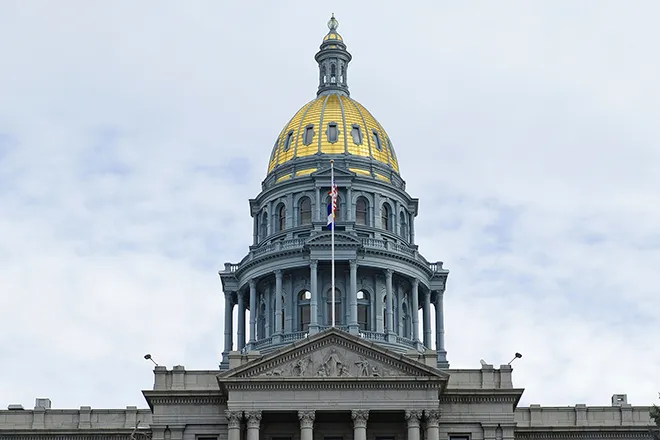
Economists say job losses likely, even as shutdown delays report
Friday’s jobs report is missing in action because of the federal shutdown, but economists are finding other ways of measuring apparent job losses concentrated in Midwestern states and oil country.
Unemployment could continue to rise, especially for Black people, who have borne the brunt of recent job losses.
Friday’s jobs report for September was missing because of the federal government shutdown. The U.S. Bureau of Labor Statistics staff responsible for collecting, analyzing and releasing the data have been furloughed since Wednesday.

© iStock.com/ultramarine5
The jobs report is useful to economists, government agencies such as the Federal Reserve, and investors trying to gauge the state of the economy, said Elise Gould, senior economist for the left-leaning Economic Policy Institute. If the data is missing for an extended time, it could distort such forecasts, she said.
“We still have some information on the economy from other sources, yes. None of the other indicators predict perfectly. There’s no replacement for the data,” Gould said.
Still, other groups are using their own measuring tools and sharing that information. ADP, a private payroll processing company, showed a decline of 32,000 jobs for the month of September.
The result “further validates what we’ve been seeing in the labor market, that U.S employers have been cautious with hiring,” ADP’s chief economist, Nela Richardson, said in a statement.
Austan Goolsbee, president and CEO of the Federal Reserve Bank of Chicago, said in an appearance on CNBC Friday morning that the available data shows weakness in both the labor market and in attempts to control inflation, making the Fed’s job difficult in deciding whether to stimulate the economy or rein it in.
“You’re seeing deterioration on both sides of the mission,” Goolsbee said. “The BLS data is the best in the world, and it does create difficulties when you’re kind of putting up a screen and you can’t see the data.”
Indiana, while gaining some new jobs in the Kokomo area for car parts and batteries factories, saw September layoffs of more than 1,600 workers, according to state figures. That includes 248 hospitality workers at a convention center in Evansville, 200 warehouse workers at a Target distribution center in Indianapolis, 123 layoffs at a security guard firm that lost a federal contract, and layoffs at two automotive parts factories totaling 189 workers.
Ohio also saw layoffs of 768 workers starting in September at a Kohl’s e-fulfillment in Middletown.
Black unemployment, which has spiked from 4.8% in April 2023 to 7.5% in August, has likely increased again, said Joseph Dean, who monitors it for the National Community Reinvestment Coalition, which encourages more investment in underserved communities.

© iStock - ronniechua
“If there were a jobs report, I’d expect a rise in the Black unemployment rate,” Dean said. “It’s likely due to a combination of factors: federal layoffs earlier in the year, anti-DEI efforts, and now primarily, stagnation in industries that employ large numbers of Black workers — like transportation and professional/business services.”
Another indicator of labor market trouble, initial claims for unemployment, were up 85% in North Dakota and 44% in Texas from August to September, according to numbers through the week ending Sept. 20 from the U.S. Department of Labor. Weak oil prices have led to recent energy layoffs in those states.
In another private survey that could help gauge the health of the labor market, outsourcing firm Challenger, Gray and Christmas reported Thursday that companies have reported more than 54,000 job cuts in September. That’s a slower rate than August but brings the total this year to 946,000 job cuts, the highest since the pandemic in 2020 and up 55% from the first three quarters of 2024.
The leading reason for job cuts has been actions by the Trump administration’s Department of Government Efficiency task force, the firm said, including cuts to government jobs and “downstream impacts” of the federal cuts, such as loss of funding to nonprofits.
There were also about 7,000 technology jobs lost to AI disruption in September, making it harder to land entry-level jobs, the firm said.
“Right now, we’re dealing with a stagnating labor market, cost increases, and a transformative new technology,” said Andy Challenger, a labor expert at the firm, in a statement.
In August, some of the largest increases in the unemployment rate over the previous year were in Texas cities on the border with Mexico: 2 percentage points each in Brownsville-Harlingen (to 7.5% from 5.5% in 2024) and Eagle Pass (to 8.9% from 6.9% last year). Those metro area estimates for August were released Oct. 1.
Cedar Rapids, Iowa, saw a 1.8-point increase in unemployment from 3.6% to 5.4%, and there were 1.7-point increases in Blacksburg, Virginia (from 4% to 5.7%), and Grants Pass, Oregon (from 6.1% to 7.8%).
Unemployment fell the most in Kokomo, Indiana, (down nearly 4.5 points from 10.7% to 6.2%) where Stellantis has been adding jobs in its automotive parts and batteries plants.
An earlier Stateline analysis showed New Jersey and Virginia were among the states most impacted by job losses in the second quarter of the year as federal cuts and corporate restructuring took a toll.

















